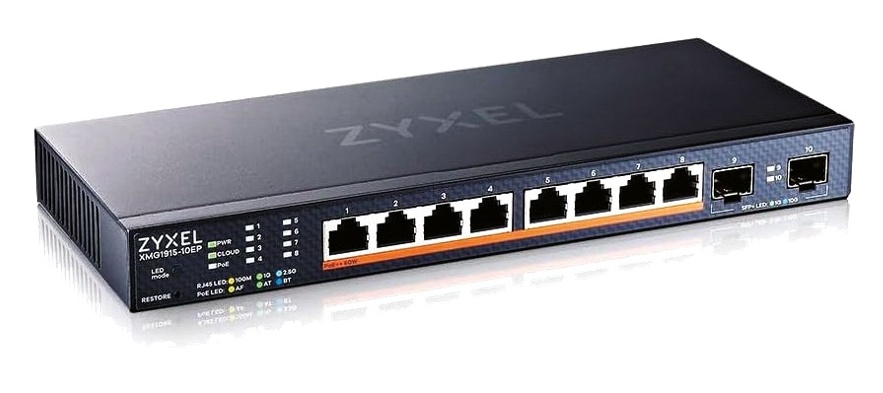Reasons to Trust TechRadar
Our team dedicates extensive time to testing each product or service we review, ensuring you purchase the finest options. Learn more about our testing methods.
This review was originally published in issue 356 of PC Pro.
The Zyxel XMG1915 switch series is designed for small businesses looking for a compact, cost-effective solution with numerous multi-gigabit ports. We evaluated the XMG1915-10EP model, which offers powerful PoE++ capabilities.
With dimensions of just 250 x 104 x 27mm (WDH), this desktop switch features eight 2.5GbE multi-gigabit ports, each capable of supplying up to 60W. Additionally, it offers two 10GbE SFP+ fiber ports for fast uplinks. Its power budget is commendable at 130W, supported by a robust 150W external power supply that is considerably larger than the switch itself.
This model uses its chassis to dissipate heat and operates silently due to its fanless design. Management features are impressive; it can function independently or connect to Zyxel’s Nebula Control Center (NCC) for comprehensive cloud management.
The front panel of the switch is equipped with several LEDs indicating system and cloud connection statuses. A tri-color PoE LED alerts users when approaching the power limit, while individual port LEDs display connection speeds of 100Mbits/sec, gigabit, or 2.5GbE.

It includes numerous standard L2 features such as port and protocol-based VLANs, along with static and LACP link aggregation groups. The switch is also tailored for VoIP networks, recognizing traffic from IP phones with a customizable unique identifier list and automatically prioritizing it by creating voice VLANs.
The dashboard of the web console displays system utilization, port speeds, power delivery status for connected devices (PDs), and overall power consumption. Each port can have one of three power priorities assigned, ensuring that in scenarios where power demand nears maximum capacity, lower-priority ports are powered off first.
Unless you’re connecting power-intensive PoE IP cameras with built-in PTZ capabilities, it’s unlikely you’ll approach the full power budget. Our tests included two Zyxel Wi-Fi 6E access points and a new WBE660S Wi-Fi 7 model, as well as Netgear’s tri-band WAX630E AP; the total power draw remained below 43W, leaving an ample surplus of 87W.
Setting up the switch on the cloud is quick. Using the Nebula iOS app on an iPad, we scanned the QR code at the base of the switch. Within just two minutes, the switch appeared on our cloud portal with all site settings configured, including a new admin password.

The NCC dashboard can be easily tailored, allowing us to add widgets to track the switch’s online status and total power usage. By selecting the switch, we accessed its monitoring page, featuring color-coded port views and traffic and power graphs that span 24 hours, extendable to seven days with an NCC Plus license and even longer with the Pro version.
For routine switch functions, Nebula provides remote access to the same features as the standalone setup. You can assign up to five global PoE schedules to specific ports determining activation times for connected PDs, and PoE services can be toggled on or off for each port—useful for remotely rebooting non-responsive devices.
The compact XMG1915-10EP is an excellent option for small businesses needing a lot of multi-gigabit ports and high-powered PoE++ services. It offers both standalone and cloud management features, all at an impressively low price.
Additionally, we compiled a list of the best apps for small businesses.

